In celebration of UCLA’s first 100 years, we’re traveling back to our early days to visit some of the people, places and moments in time that have had a lasting impression on who we are as a university.
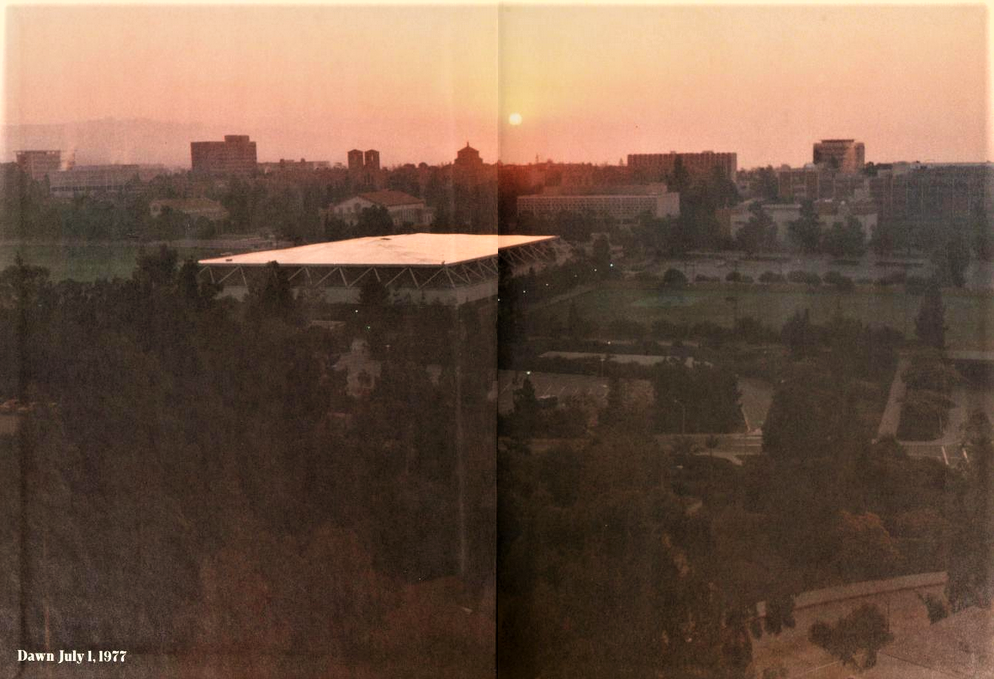

UCLA Campus, 1977
As a catalyst for progress, 1970s UCLA was a decade of breakthroughs that would change the world. As the decade began, the turmoil from the Sixties carried over — driven by the continuing war in Vietnam and the ongoing fight for civil rights. Although the unprecedented building of previous decades slowed, innovative programs and research grew, as did the University’s reputation as a world-class institution.
A CAMPUS IN TURMOIL
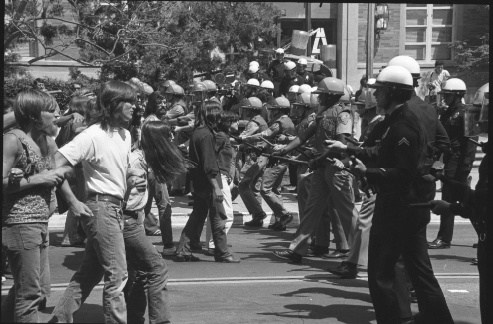
UCLA protestors clash with police
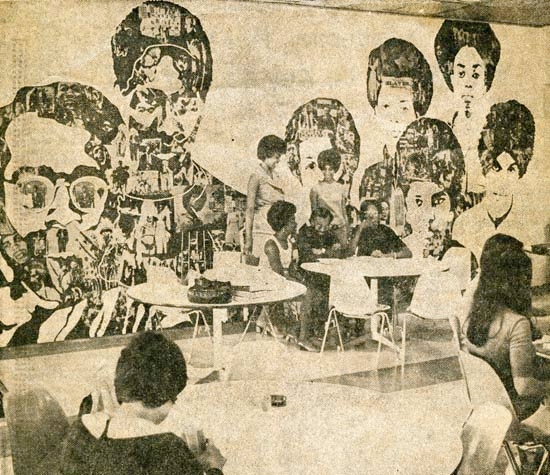
The Black Experience mural
STRIDES IN DIVERSITY AND EQUITY
As the struggle for civil rights and equality gained momentum in the 1960s, students, staff and faculty at UCLA continued to press for rights and representation. In the Seventies, UCLA’s diverse community members made their voices heard.
Inspired by the events of the times, including a strike for educational reform by Los Angeles high school students and the shooting of local reporter Rubén Salazar, Latino students at UCLA were committed to building a movement for change. In 1972, American labor leader and Latino American civil rights activist César Chávez spoke on the UCLA campus. The co-founder with Dolores Huerta of the National Farm Workers Association, later the United Farm Workers (UFW) union, Chávez who had just ended a month-long hunger strike, spoke to Bruins about farmworkers’ ongoing struggle in the fields, a plight which UCLA students and faculty supported – and urged a boycott of non-union lettuce. Chávez’s speech, along with 365 others from the era including those by Black Power advocate Eldridge Cleaver, civil rights leader Angela Davis and Twilight Zone creator Rod Serling, was recorded on reel-to-reel tape and stored in the archives of the UCLA Communication Studies Department. The tapes are being restored and digitized to the University Archives to give listeners a glimpse into this turbulent era.
In his 1964 State of the Union address, President Johnson introduced legislation aimed at targeting economic disparity, called the War on Poverty. The Educational Opportunity Program (EOP) was created to widen access to education for students from historically underrepresented backgrounds. In 1971, to reach more underrepresented students UCLA consolidated their EOP and High Potential Program (HPP), to create the Academic Advancement Program (AAP).
AAP is the nation’s largest student diversity program, providing guidance and support through scholarships, academic advising, mentoring and summer programs for entering students. Many AAP students come from high-need families, are the first in their families to go to college or come from underrepresented populations. AAP students have demonstrated their potential to excel at UCLA; these programs are designed to further their long-term growth.
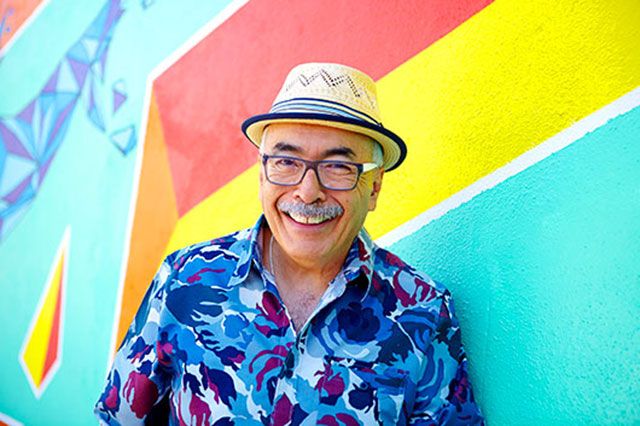
Juan Felipe Herrera ’72
Students at UCLA were inspired to action by campus events, working for change in their communities. In 1973, an undergraduate major in Chicano Studies was established, and UCLA students organized Raza Graduation, a ceremony to represent Latino traditions. Rosalío Muñoz was UCLA’s first Chicano student body president. A journalist and activist, Muñoz also co-chaired the 1970 Chicano Moratorium Committee, to organize opposition to the Vietnam War.
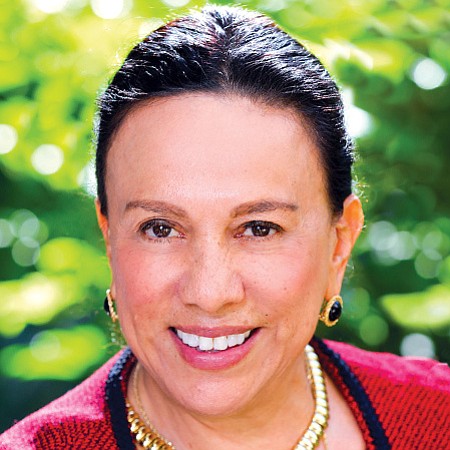
Antonia Hernandez ’70, J.D. ’74
The 41st mayor of Los Angeles, Antonio Villaraigosa ’77, transferred to UCLA from East Los Angeles College where he became active in MEChA, a student organization that creates change through political involvement and education. He led demonstrations in support of farmworkers, ethnic studies programs and increased admission of women and minorities. As the first Latino to serve as mayor of Los Angeles since Cristobal Aguilar in 1872, Villaraigosa built a legacy of creating coalitions between diverse constituents. He said, “For me, public education really was the great equalizer. That’s why I believe education is the civil rights issue of our time.”
The Institute of American Cultures had been established when Chancellor Young secured a five-year Ford Foundation grant for support of the American Indian, Asian American, African American and Chicano Studies Centers dedicated to culturally appropriate research, information distribution and community service. The Centers were created to address student and community member concerns that UCLA was not conducting research or disseminating accurate information about their history and culture. The American Indian Studies Center grant supported research, grant writing, a library, publications and curriculum development concentrating on Native American history and culture.
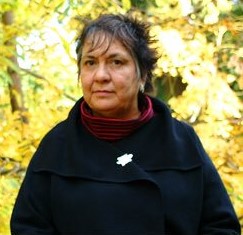 In the late Sixties and Seventies, the Visual Communications and Ethno-Communications Departments collaborated to recruit students from underrepresented populations, giving them access to the tools of cinema and control of how they were portrayed in media. Sandra Osawa, a member of the Makah nation, was excited by the opportunity to tell stories from her point of view. In 1974, Osawa produced the TV program “The Native American Series,” which aired before the “Today Show” and was the first series on NBC to focus on Native American issues. An accomplished filmmaker and poet, Osawa has dedicated her career to telling the stories of her community and advocating for others to do the same.
In the late Sixties and Seventies, the Visual Communications and Ethno-Communications Departments collaborated to recruit students from underrepresented populations, giving them access to the tools of cinema and control of how they were portrayed in media. Sandra Osawa, a member of the Makah nation, was excited by the opportunity to tell stories from her point of view. In 1974, Osawa produced the TV program “The Native American Series,” which aired before the “Today Show” and was the first series on NBC to focus on Native American issues. An accomplished filmmaker and poet, Osawa has dedicated her career to telling the stories of her community and advocating for others to do the same.

Sandra Osawa
To represent the stories of Asian Americans, a group of film school students founded a groundbreaking nonprofit media arts organization, Visual Communications (VC). Tied to UCLA’s Asian American studies movement, Duane Kubo ’75, Robert Nakamura, M.F.A. ’75, Alan Ohashi ’75 and Eddie Wong wanted to present an alternative perspective to mainstream images of Asian Americans. Nakamura's 1972 documentary “Manzanar” shared his experiences during the World War II incarceration of Japanese Americans.
Working to change the portrayal of African Americans in mainstream film, a generation of young African American filmmakers studied at the UCLA Film School from 1967 through the 1980s. Known as the L.A. Rebellion film movement, they developed a creative culture outside of classic Hollywood rules. Among the filmmakers, Carroll Parrott Blue, M.F.A. ’80, focused her multimedia documentary projects on women of the African Diaspora. Her film, “Varnette’s World: A Study of a Young Artist” (1979), follows a painter’s inspiring portrayals of everyday black life. Alile Sharon Larkin’s, M.F.A. ’82, films have a nonlinear, collage style. She made two at UCLA that portray the pressure and discrimination faced by black women in “The Kitchen” (1975), and economic and social inequality in “Your Children Come Back to You” (1979).
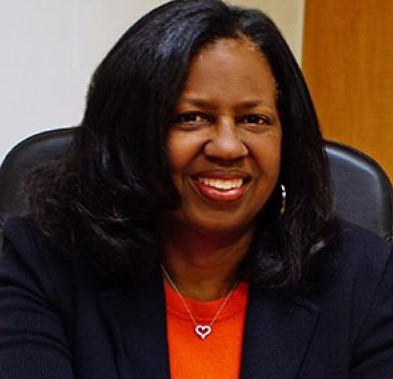
Yolanda J. Gorman ’78, MBA ’83, Ph.D. ’93
The movement for lesbian and gay rights also gained strength on campus in the 1970s. One year after New York’s Stonewall Riots, activists in Los Angeles organized the first Gay Pride Parade, today one of the largest in the world. The movement was reflected on campus with the establishment of UCLA’s Gay Student Union (GSU). In 1974 the GSU held UCLA’s first “Gay Awareness Week” with guest speakers, lectures and a dance party. UCLA’s first course in lesbian, gay, bisexual and transgender studies, taught in 1976, was the English class “Gay and Lesbian Literature.” UCLA Chancellor Young was one of the first university leaders to direct departments not to discriminate based on sexual orientation.
ATHLETIC SUCCESSES
During the summer of 1972, UCLA hosted the third Special Olympics Summer Games with 2,500 athletes and coaches from all 50 states visited campus. It was also during this decade that UCLA sports flourished with a record 23 NCAA championships in sports including tennis, volleyball and basketball.
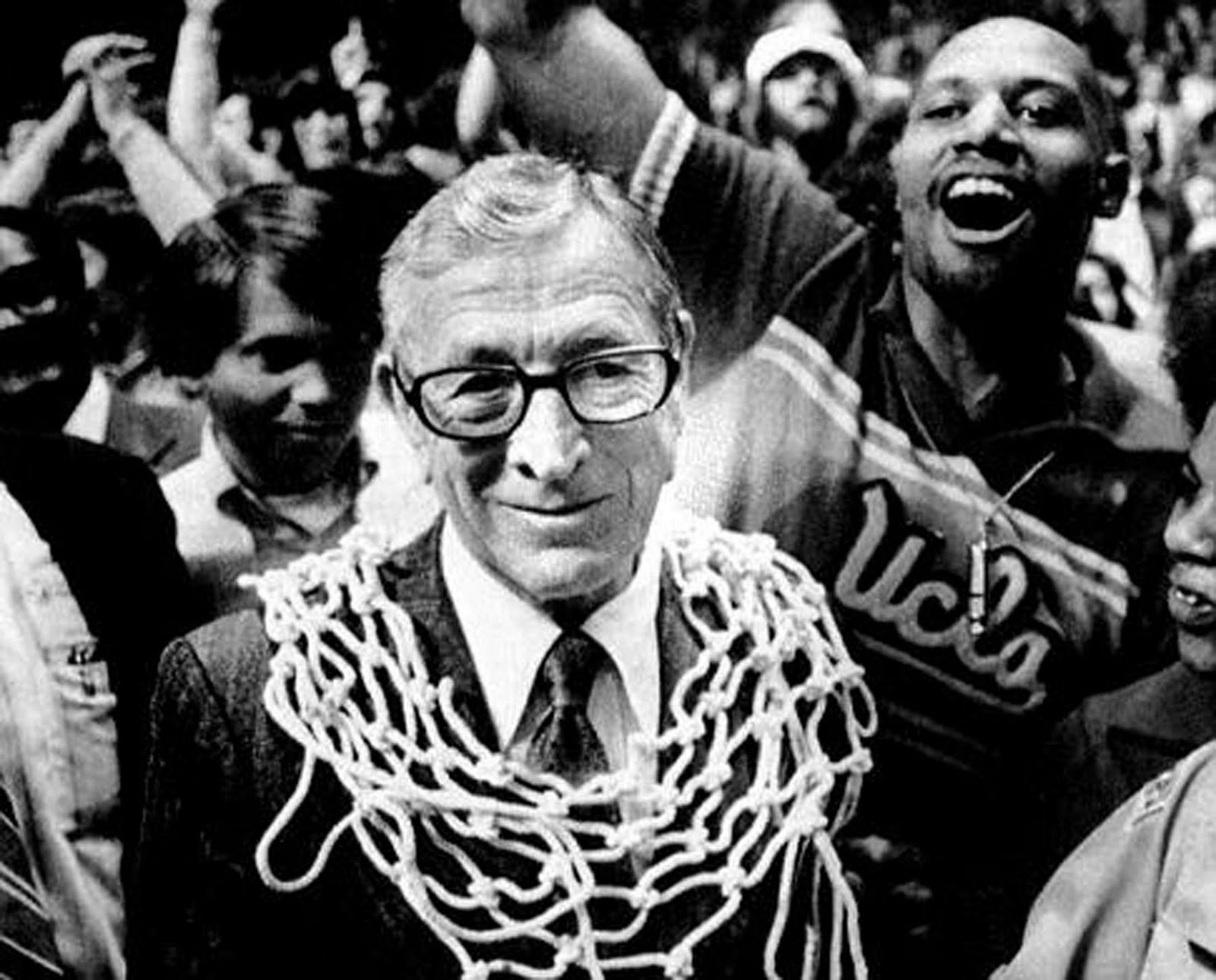
Coach John Wooden
But Coach Wooden’s legacy extends beyond basketball. A coach who valued teamwork over winning, his Pyramid of Success is a roadmap to giving your best each day, rooted in ideals of fair play, integrity and character. He said “The best competition I have is against myself to become better.” He is remembered as one of the greatest coaches of all time. Wooden would continue to attend games in Pauley Pavilion, in his reserved seat behind the Bruin bench, until his death in 2010.
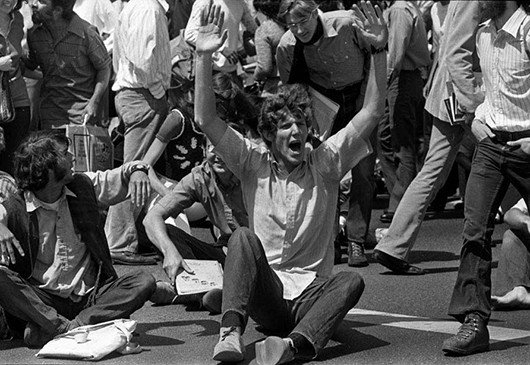
Bill Walton ’74 getting arrested
Two notable athletes during the 1970s have both dedicated their careers to UCLA since graduating. UCLA athletic director Dan Guerrero ’74 attended UCLA on a baseball scholarship and was eventually inducted into the UCLA Baseball Hall of Fame in 1996. Guerrero is credited with revitalizing the athletics program and is scheduled to retire when his contract expires in June 2020. Football coach Terry Donahue ’67, M.S. ’77, attended UCLA as a student-athlete, playing on the1965 team that beat USC in a surprise win, going on to defeat Michigan at the Rose Bowl, Donahue won another Rose Bowl championship as assistant coach in 1976. He served two decades as head coach of UCLA Football and was named the Edward A. Dickson Alumnus of the Year in 2008.
In 1974, the establishment of the Department of Women’s Intercollegiate Sports expanded UCLA athletic teams. Among the first universities to elevate women’s sports, UCLA’s efforts were commended as a model program. Before the passage of Title IX, UCLA had added 10 women’s varsity teams and a coed badminton squad.
The program’s first director, Judith Holland, oversaw the growth of UCLA’s women’s teams, allocating the bulk of her small budget to scholarships. In her first year, she recruited 188 women to the new program. In 1981, the NCAA began awarding championships for women’s athletics, which were integrated into the Department of Intercollegiate Athletics.
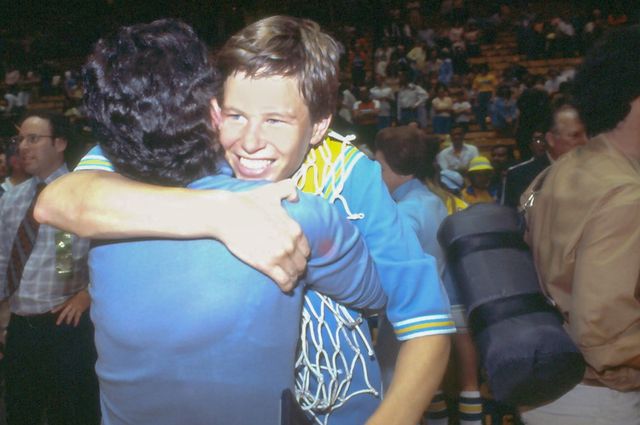 Standout basketball player Ann Meyers Drysdale ’79 was the first woman signed to a four-year athletic scholarship at any university, opening doors for the next generation of women athletes. A high school athlete in seven varsity sports including softball, badminton, field hockey, tennis and basketball, she was the first high school student to play for the U.S. National Team. In 1976, UCLA coach Billie Moore led Meyers and the U.S. team to a silver medal in the 1976 Summer Olympics, the first year to have women’s basketball. The first four-time All-American women's basketball player, she was the first player drafted by the WPBL to the New Jersey Gems and in 1980, became the color analyst for the Indiana Pacers, after becoming the first woman to try out for the NBA. She says, “If someone gives you an opportunity, don’t worry about failing. You have to have the courage to do it – fail or succeed.”
Standout basketball player Ann Meyers Drysdale ’79 was the first woman signed to a four-year athletic scholarship at any university, opening doors for the next generation of women athletes. A high school athlete in seven varsity sports including softball, badminton, field hockey, tennis and basketball, she was the first high school student to play for the U.S. National Team. In 1976, UCLA coach Billie Moore led Meyers and the U.S. team to a silver medal in the 1976 Summer Olympics, the first year to have women’s basketball. The first four-time All-American women's basketball player, she was the first player drafted by the WPBL to the New Jersey Gems and in 1980, became the color analyst for the Indiana Pacers, after becoming the first woman to try out for the NBA. She says, “If someone gives you an opportunity, don’t worry about failing. You have to have the courage to do it – fail or succeed.”
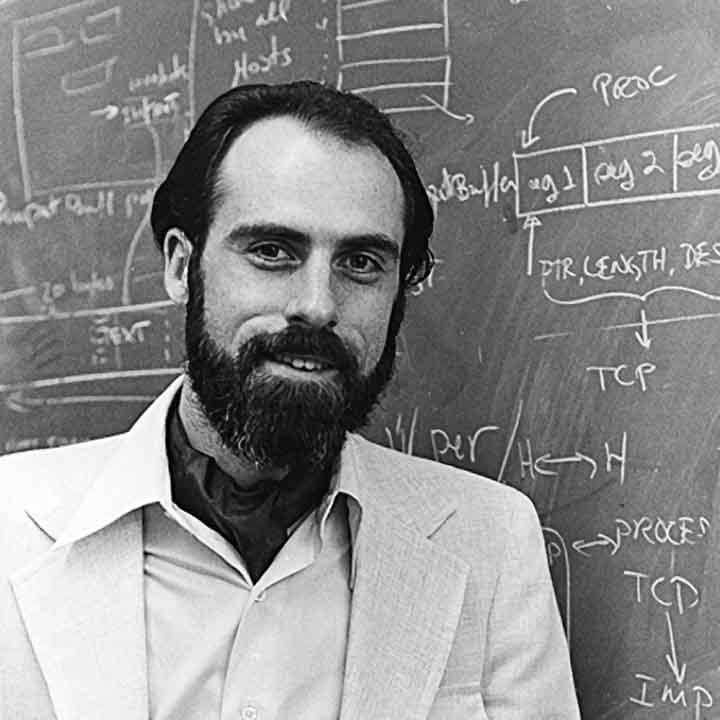 Technology and science entered a new stage of innovation as ideas became reality. UCLA was home to important work and groundbreaking discoveries. Computer Science doctoral student Vinton Cerf M.A. ’70, Ph.D. ’72, is recognized as one of "the fathers of the Internet." Cerf, who worked on the ARPANET in the 1970s, teamed with Bob Kahn to write the 1974 paper “A Protocol for Packet Network Intercommunication,” the foundation for their development of the Transmission Control Protocol (TCP/IP). Their ideas allow computers around the world to communicate with each other, the basis of open-architecture networking.
Technology and science entered a new stage of innovation as ideas became reality. UCLA was home to important work and groundbreaking discoveries. Computer Science doctoral student Vinton Cerf M.A. ’70, Ph.D. ’72, is recognized as one of "the fathers of the Internet." Cerf, who worked on the ARPANET in the 1970s, teamed with Bob Kahn to write the 1974 paper “A Protocol for Packet Network Intercommunication,” the foundation for their development of the Transmission Control Protocol (TCP/IP). Their ideas allow computers around the world to communicate with each other, the basis of open-architecture networking.
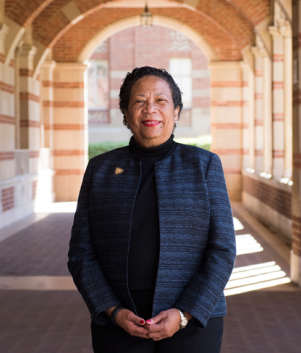 Linda Burnes Bolton, M.S.N. ’72, M.P.H. ’76, DR.P.H. ’88, recipient of the 2016 UCLA Alumni professional achievement award, built a legacy of excellence in care and a commitment to the nursing profession. In her work, she has focused on patient care outcomes, community collaboration and cultural diversity. A past president of the National Black Nurses Association, Burnes Bolton was recently named the inaugural chief health equity officer at Cedars-Sinai Medical Center to tackle issues related to disparities in access to healthcare.
Linda Burnes Bolton, M.S.N. ’72, M.P.H. ’76, DR.P.H. ’88, recipient of the 2016 UCLA Alumni professional achievement award, built a legacy of excellence in care and a commitment to the nursing profession. In her work, she has focused on patient care outcomes, community collaboration and cultural diversity. A past president of the National Black Nurses Association, Burnes Bolton was recently named the inaugural chief health equity officer at Cedars-Sinai Medical Center to tackle issues related to disparities in access to healthcare.
 Engineering student Henry Samueli ’75 M.A. ’76, Ph.D. ’80, became interested in electronics in middle school when he built a radio in shop class. The son of Jewish immigrants who escaped Nazi Germany, he studied electrical engineering at UCLA and went on to co-found Broadcom, a global technology company that develops semiconductor software for wireless technology. Samueli describes electrical engineering as “making people’s lives better (by) applying math and science.”
Engineering student Henry Samueli ’75 M.A. ’76, Ph.D. ’80, became interested in electronics in middle school when he built a radio in shop class. The son of Jewish immigrants who escaped Nazi Germany, he studied electrical engineering at UCLA and went on to co-found Broadcom, a global technology company that develops semiconductor software for wireless technology. Samueli describes electrical engineering as “making people’s lives better (by) applying math and science.”

Ann Meyers Drysdale ’79
Jan Palchikoff ’75 rowed on the first women’s varsity team, winning the first national championship in 1975 and competing in the 1976 Olympics, placing fifth. UCLA’s women’s sports program, although competing at the same levels as the men, was not given the same level of support. A fighter for equity in women’s sports, Palchikoff formed the Union of Female Athletes to press for change. Considered radical by some, the group distributed petitions, contacted media and wrote op-eds for the Daily Bruin. While no changes were enacted at the time, she received the UCLA Outstanding Senior Award in recognition of her efforts. In addition, the Daily Bruin agreed to stop referring to UCLA’s women’s teams as “Bruin Dolls.” Palchikoff continues to compete at the masters level in track cycling, setting a world record for her age group in 2014 and was inducted into UCLA's Athletic Hall of Fame in 2015.
ADVANCES IN SCIENCE

Vinton Cerf M.A. '70, Ph.D. '72
Advances in technology and computerization were transforming the medical field. By the end of the decade, a modernized UCLA Medical Center would admit its one millionth patient. UCLA also forged alliances with community, county and federal hospitals throughout Southern California, and with the Venice Family Clinic, which would become the largest free clinic in the nation. In 1977, under Dean Mary Reres, UCLA opened its first Nurse Clinic on Skid Row to serve Los Angeles’ homeless population.

Linda Burnes Bolton, M.S.N. ’72, M.P.H. ’76, DR.P.H. ’88
Clinician, researcher, mentor and educator Kathleen Dracup, M.N. ’74, has dramatically improved the quality of life for her cardiac patients. A leader in the care of patients with heart disease and their family members, she has tested interventions to reduce patients’ emotional distress and reduce mortality from cardiac death. In honor of her career of service, in 2014, Dracup was named a Living Legend by the American Academy of Nursing, and in 2015, she received the UCLA Award for Professional Achievement.
Since its founding in 1945, UCLA Samueli School of Engineering faculty and students have made discoveries to advance engineering in a wide range of areas including energy, sustainability, healthcare and infrastructure. In the 1970s, its projects included innovations in artificial joints and organs, preventing car accident injuries, the effects of smog and the development of a car that runs on hydrogen gas.

Henry Samueli ’75, M.A. ’76, Ph.D. ’80
UCLA has a stellar history in the space-exploration business, with seven distinguished Bruin astronauts and an alumna currently among the astronaut candidate class. Having earned UCLA degrees in chemistry and medicine, astronaut Anna Lee Fisher ’71, M.D. ’76, began her career as an emergency room physician. Growing up in San Pedro, she dreamt of going to space. When the space shuttle program launched, she and her husband, both physicians, were selected for the program. In 1984, when her daughter was 14 months old, Fisher became the first mother in space, operating the space shuttle Discovery’s robotic arm to retrieve malfunctioning satellites.
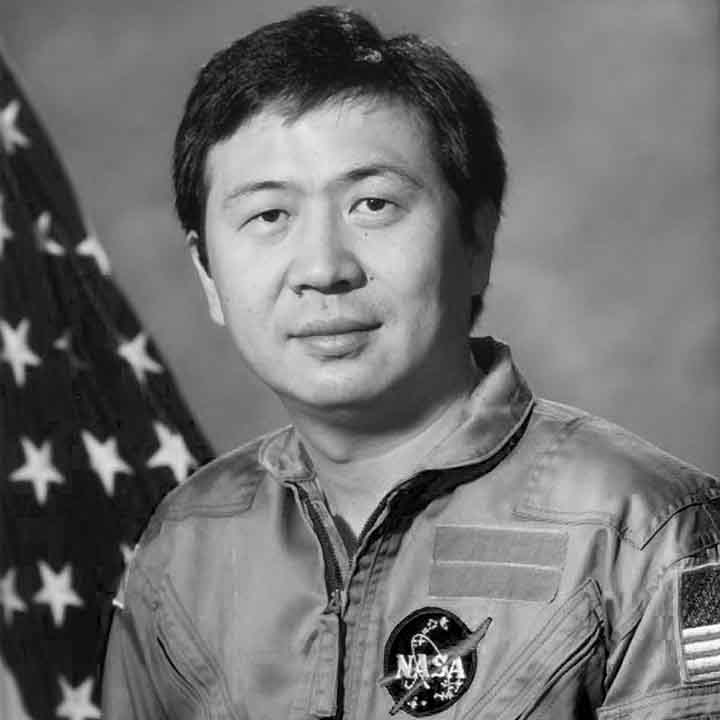 Dr. Fisher delivered the UCLA College centennial commencement address in 2019 saying, "Things don’t always happen the way you expect – but sometimes, they turn out better than you could have imagined."
Dr. Fisher delivered the UCLA College centennial commencement address in 2019 saying, "Things don’t always happen the way you expect – but sometimes, they turn out better than you could have imagined."

Taylor Wang ’67, M.S. ’68, Ph.D. ’71
Astronaut and scientist Taylor Wang ’67, M.S. ’68, Ph.D. ’71, became the first Chinese-American astronaut when he joined the Challenger’s Spacelab 3 mission in May 1985. Wang, who holds 30 U.S. patents in acoustics and science, would log 168 hours in space.
UCLA CELEBRATES 50 YEARS AT WESTWOOD
In 1979, Golden Year celebrations commemorated the 50th anniversary of UCLA at the Westwood campus since the move across town in 1929. The year was celebrated with a fireworks display, the unveiling of a special UCLA flag and the awarding of the first UCLA Medals, the highest honor bestowed upon those who have earned academic and professional acclaim, and whose work demonstrates the highest ideals of UCLA. The first ever UCLA Medals were awarded to pioneer coach William Ackerman ’24, and former president of the UCLA Alumni Association John Canaday ’27.
The Seventies carried the momentum forward from the Sixties, launching UCLA into the modern era of social and scientific progress, resolved in its commitment to creating a better world. The Eighties would bring the excellence and excitement of the Olympic Games to UCLA, hosting the world’s best athletes and welcoming guests from around the globe.
Series Archive